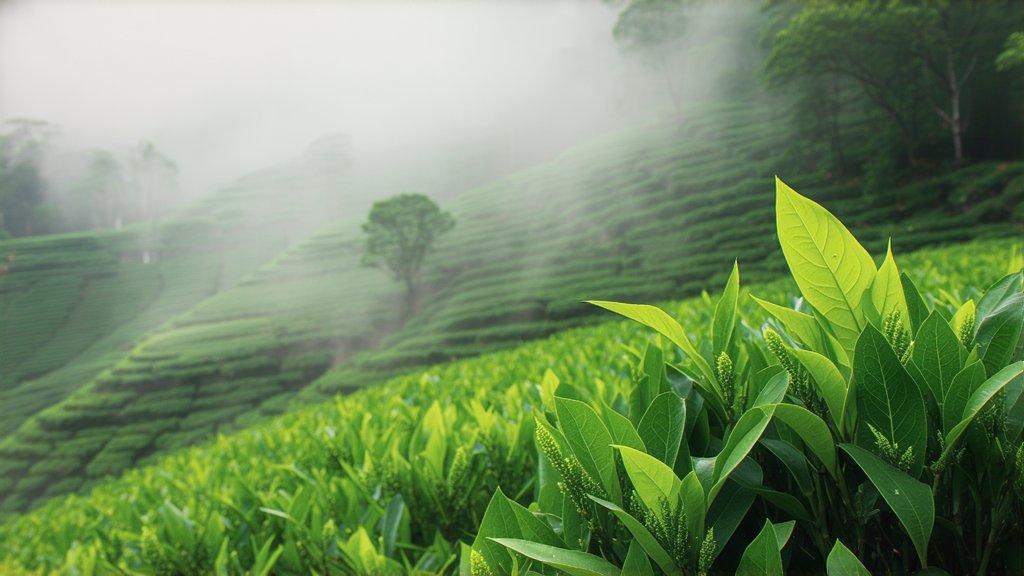
Longjing tea, often referred to as Dragon Well tea, stands as one of China's most revered contributions to the world of tea. This exquisite green tea originates from the picturesque region of Hangzhou in Zhejiang Province, where its cultivation is deeply intertwined with the cultural heritage and natural beauty of the area. With a history spanning centuries, Longjing has not only survived but thrived, becoming a symbol of Chinese tea craftsmanship and a beloved beverage worldwide.
Historical Background
The story of Longjing tea dates back to the Tang Dynasty (618-907 AD), though it gained prominence during the Qing Dynasty under the reign of Emperor Kangxi. According to legend, Emperor Kangxi was so impressed by the quality of this tea that he granted it his personal seal of approval, elevating its status among all Chinese teas. The name "Longjing," meaning "Dragon Well," is derived from a well located near the West Lake in Hangzhou, which is said to have been frequented by dragons in ancient times—a testament to the mystique and reverence surrounding this tea.
Varieties and Classification
Longjing tea comes in several grades, each reflecting the level of care taken during its production. The finest grades are known for their flat, spear-like leaves and vibrant emerald color. These top-tier leaves are typically handpicked and meticulously sorted to ensure uniformity and quality. As you move down the grades, the leaves become less uniform, and the flavor profile may vary slightly, though still maintaining the distinctive characteristics of Longjing.
Artistry in Craftsmanship
The making of Longjing tea is an art form that requires skill, precision, and a deep understanding of nature's rhythms. The process begins with the careful selection of tender shoots and leaves, usually picked during the early spring when the nutrients are at their peak. These leaves undergo minimal processing to preserve their natural essence.
Firstly, the freshly picked leaves are withered under the sun to reduce moisture content slightly. Next comes the pan-frying stage, where skilled artisans stir-fry the leaves in large woks over high heat. This step is crucial as it halts oxidation, locking in the fresh, grassy flavors and aromas characteristic of green tea. The leaves are then shaped by hand or machine into their iconic flat appearance, resembling the shape of a spear or sword. Finally, the tea is dried to remove any remaining moisture, ensuring longevity without compromising on taste.
The Essence of Flavor
Longjing tea offers a sensory experience that transcends ordinary beverages. Its flavor profile is a harmonious blend of sweetness, umami, and a subtle vegetal undertone. Upon brewing, the infusion releases a pale yellow-green liquor that is both visually captivating and aromatic. The initial taste is refreshingly light, with a lingering aftertaste that reveals hints of caramel and chestnut, a result of the unique roasting process. Each sip invites contemplation and appreciation for the intricate balance achieved through traditional methods.
Appreciating Longjing: The Art of Tasting
To fully appreciate Longjing tea, one must engage in the ritualistic practice of Gongfu Cha, or 'the way of tea.' This involves using a small Yixing clay teapot or a Gaiwan, allowing for precise control over water temperature and steeping time. The optimal brewing temperature for Longjing is around 75-80°C (167-176°F), which preserves its delicate flavors without extracting bitterness.
Begin by rinsing the tea leaves gently with hot water to awaken them, discarding this first infusion. For subsequent steepings, allow the leaves to unfurl gradually, starting with a brief 15-30 seconds and extending as desired. Observe the transformation of the leaves; they should dance gracefully in the water, releasing their essence. Sip slowly, savoring the nuances of each infusion, which can vary from the initial freshness to deeper, more complex notes as the session progresses.
Conclusion
Longjing tea is more than just a drink; it embodies the philosophy of harmony between man and nature, a testament to centuries-old traditions passed down through generations. Its enduring popularity speaks volumes about its ability to captivate tea enthusiasts worldwide. Whether enjoyed in solitude or shared among friends, Longjing serves as a bridge connecting past and present, inviting us to slow down, reflect, and appreciate the simple yet profound pleasures of life.
In every cup of Longjing, there lies a story waiting to be told—a tale of dedication, artistry, and the unwavering pursuit of perfection that defines Chinese tea culture. As we raise our cups to our lips, let us remember the hands that crafted this elixir and the land that nurtured it, celebrating not just a tea but a timeless tradition that continues to enrich our lives today.